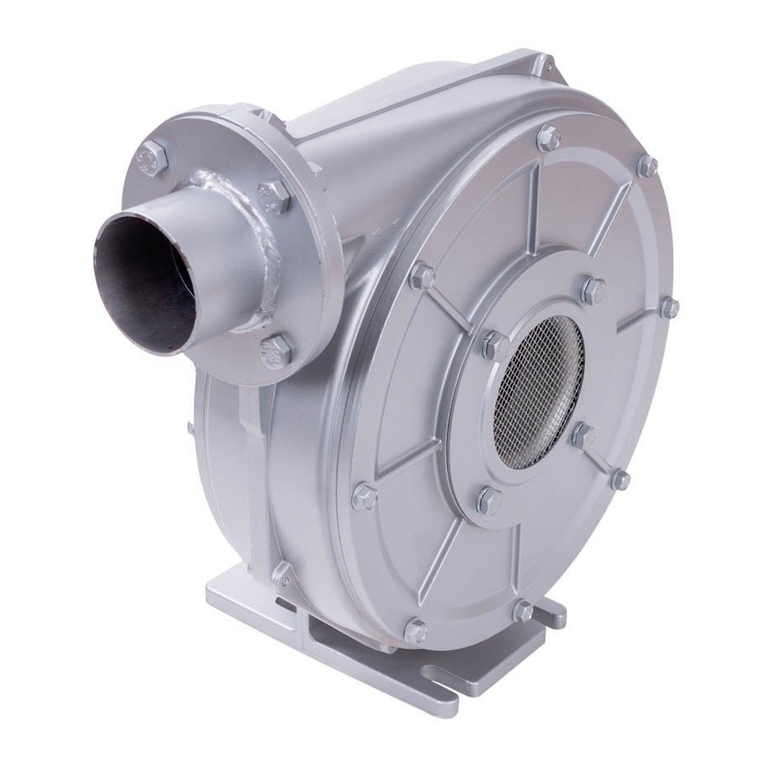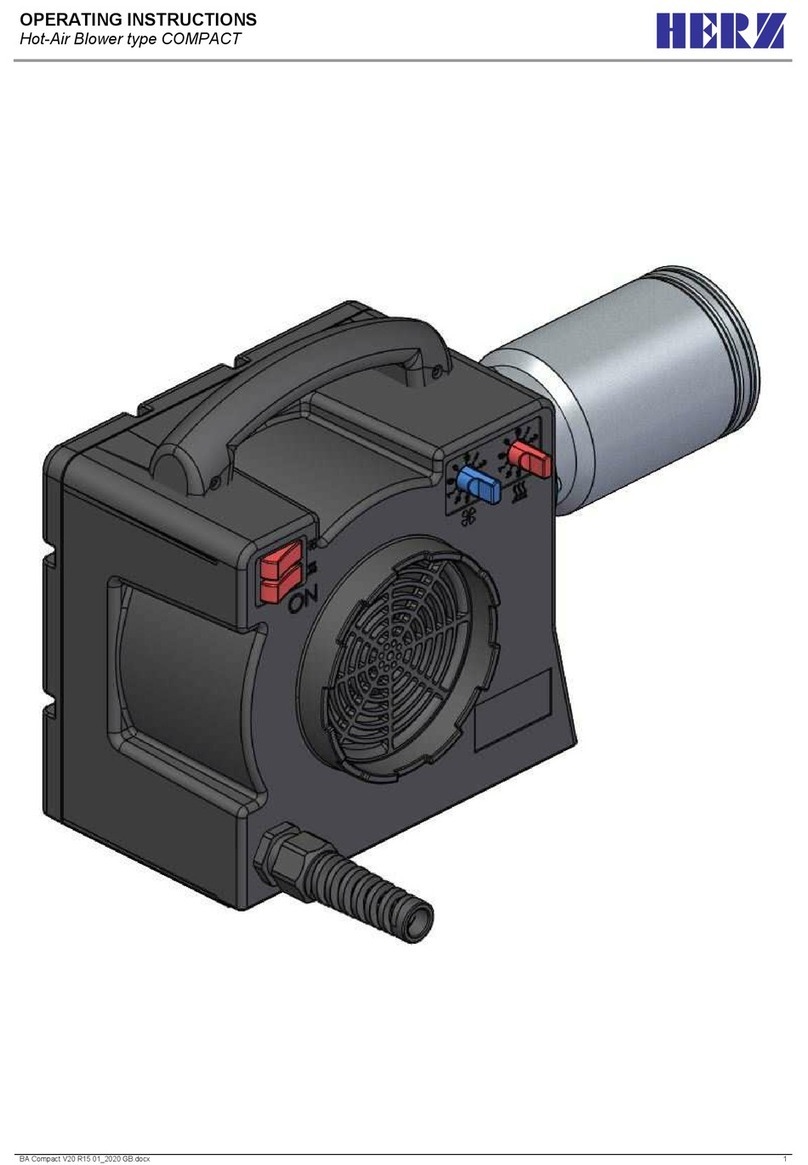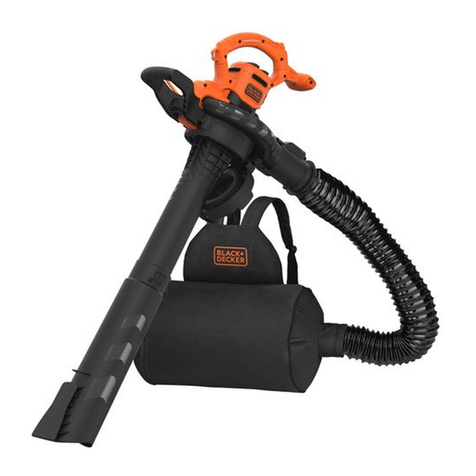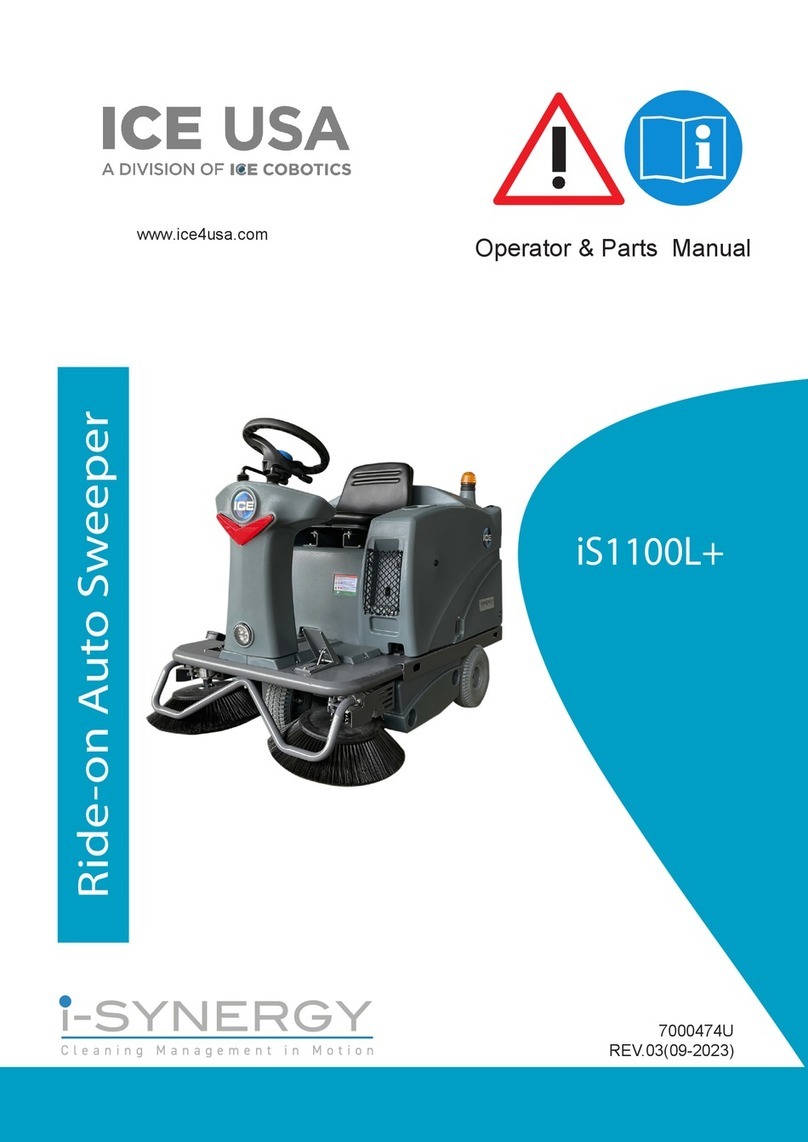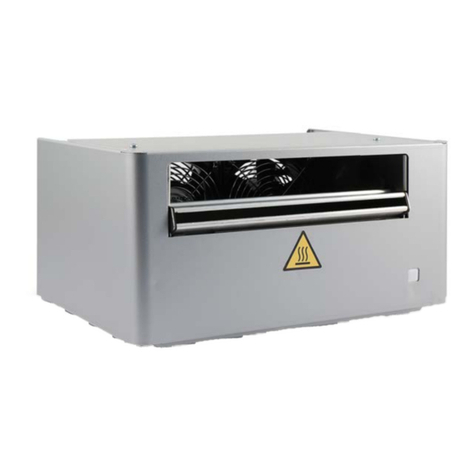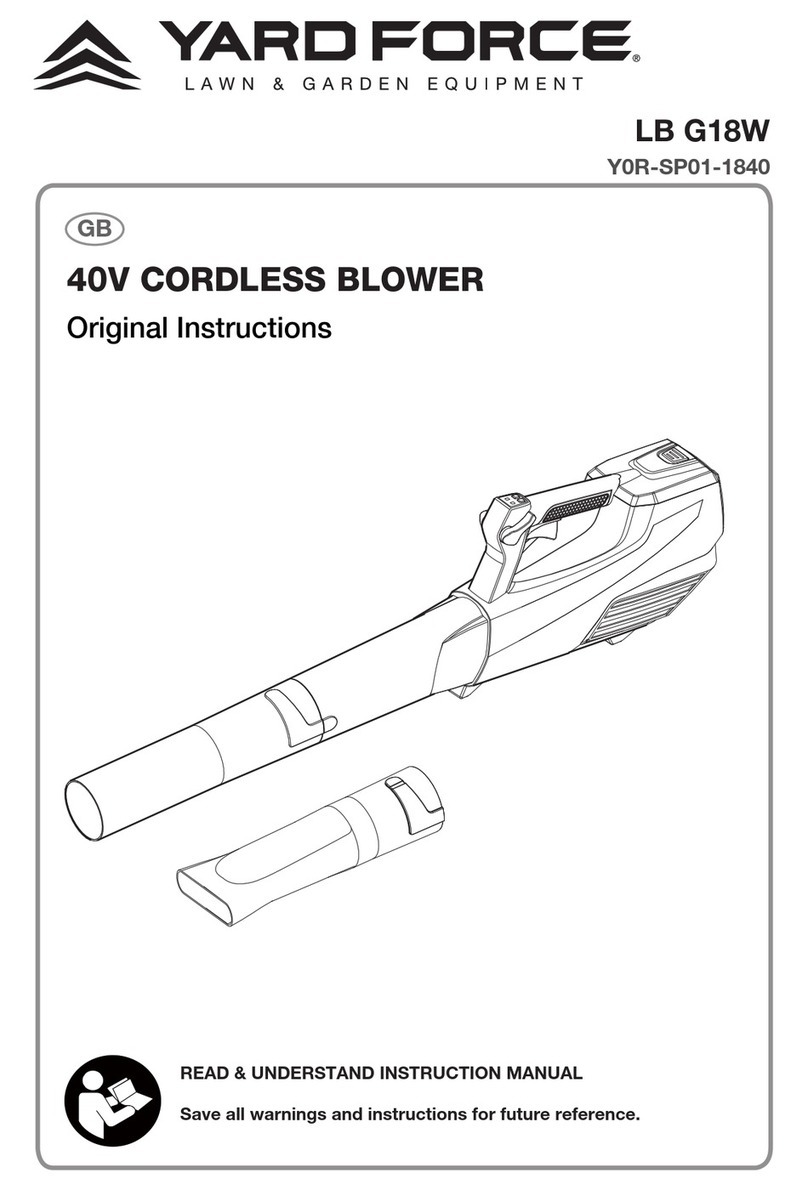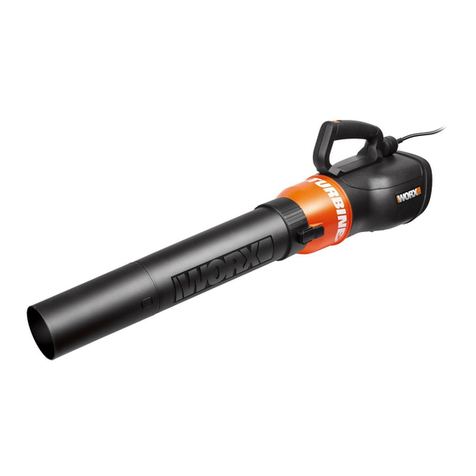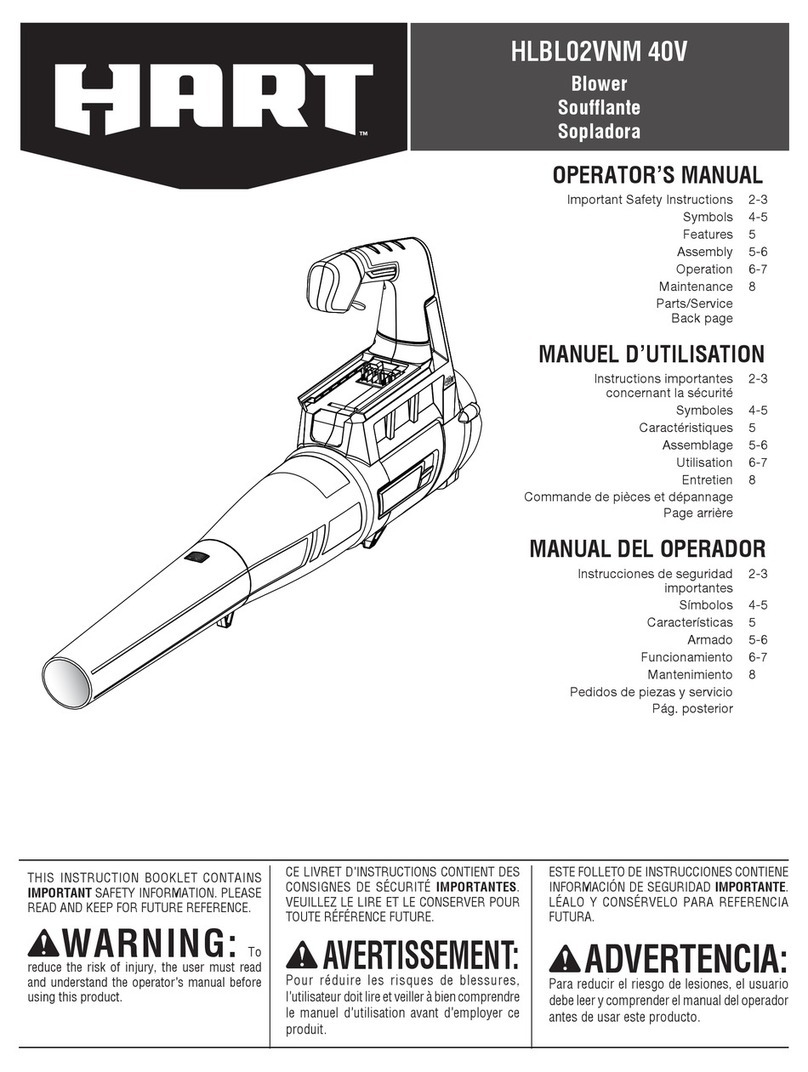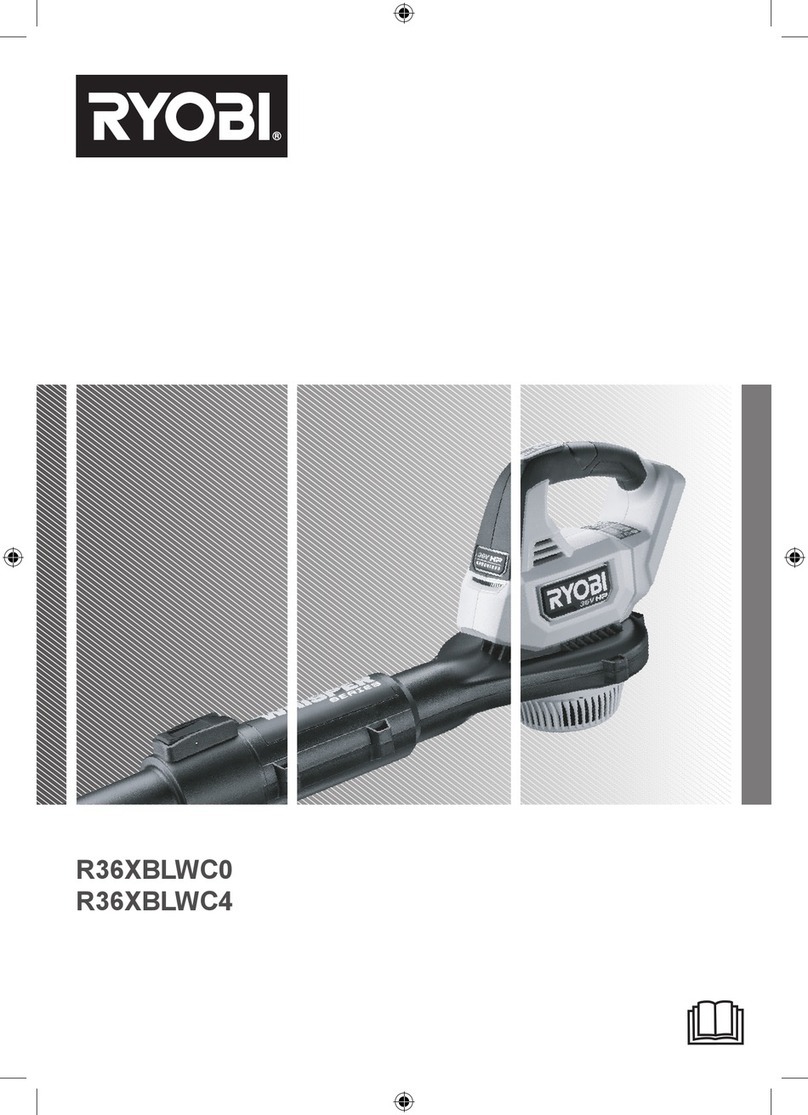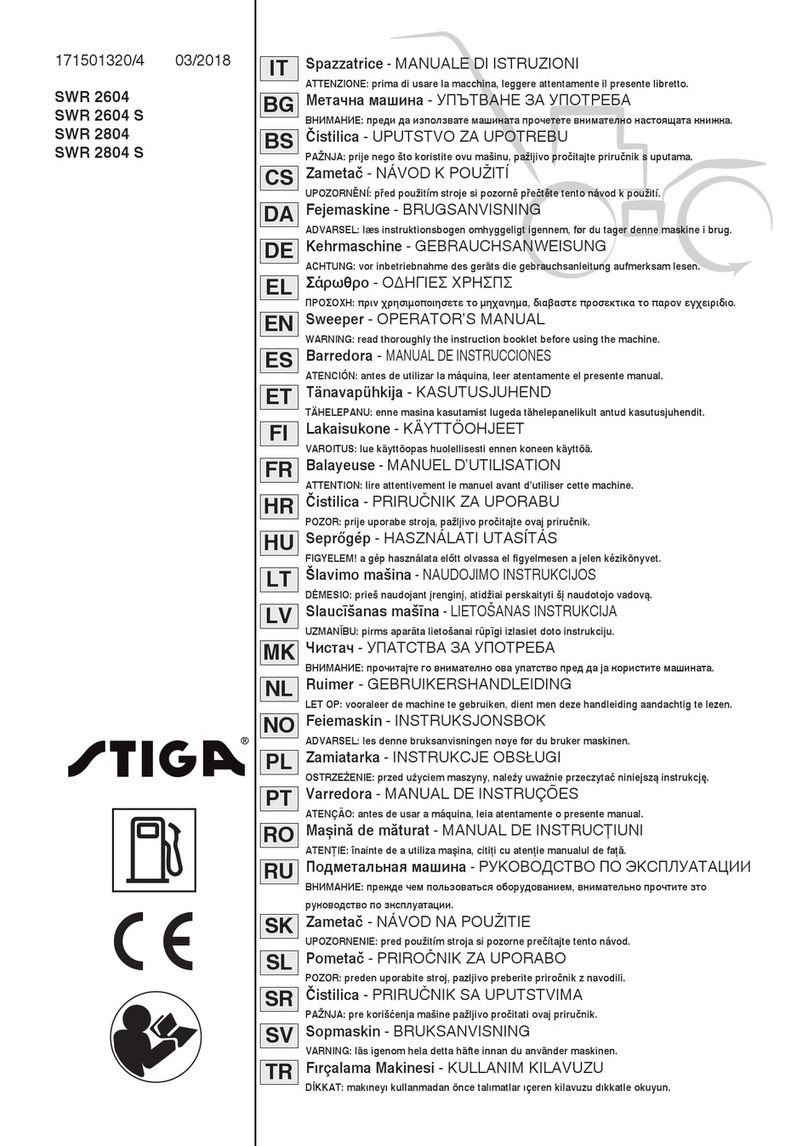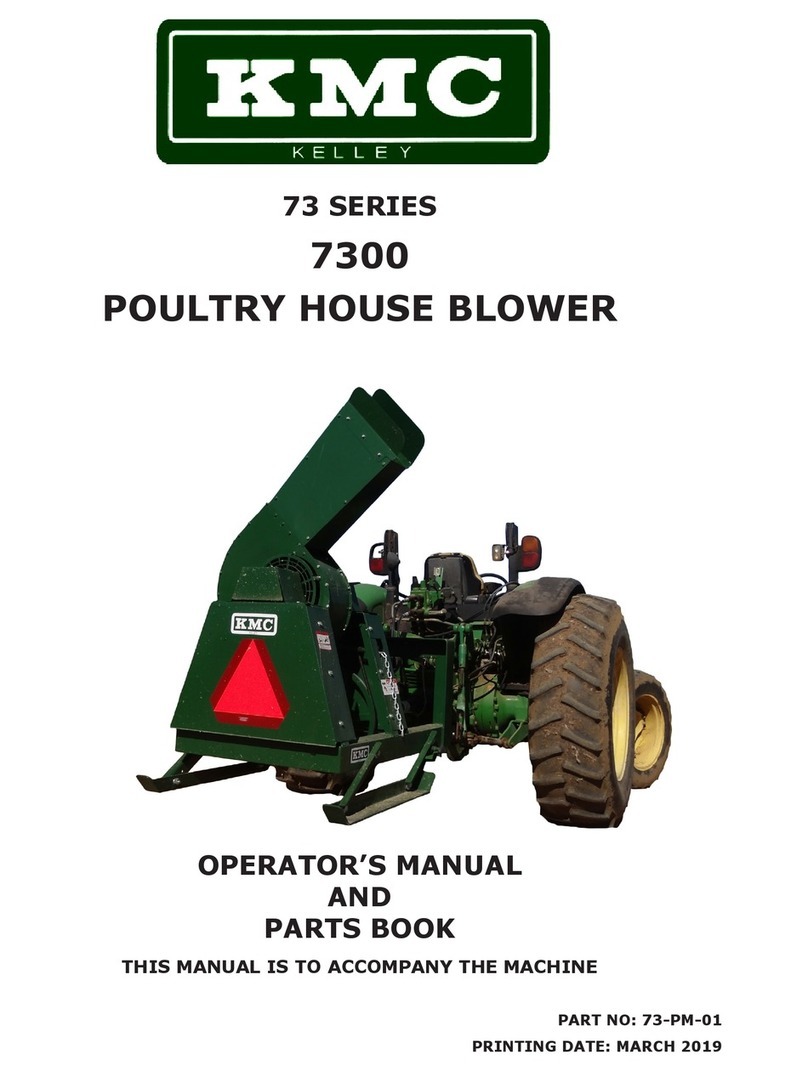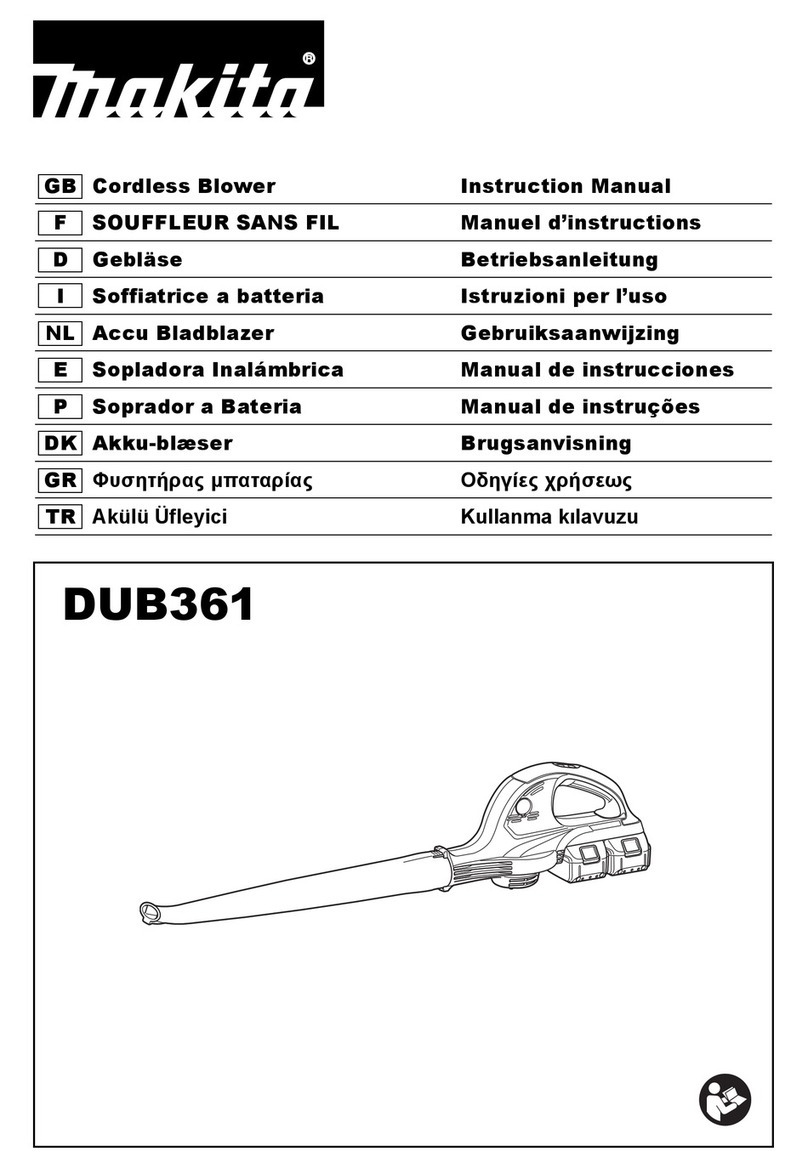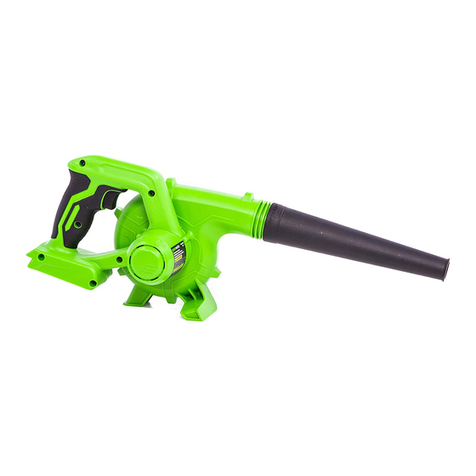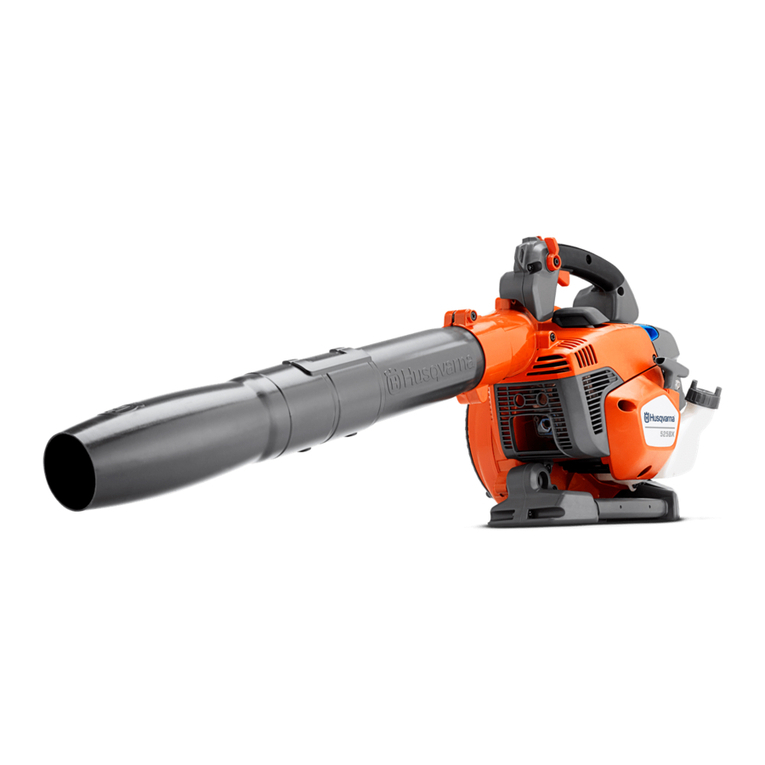Herz MD10 User manual

BA MD10MD14 V30 R12 03_2012 EU short 1
HERZ
Herz Mitteldruckgebläse – Betriebsanleitung
Herz medium-pressure blowers – Operating instructions
Ventilateurs moyenne
pression Herz – Notice d’utilisation
Herz Ventilatori a media pressione– struzioni per l’uso
Herz middendrukventilatoren – Bedieningshandleiding
Herz wentylatory średniociśnieniowe - nstrukcja obsługi
Herz középnyomású
légellátó – Használati útmutató
Herz Високо налягане вентилатор - инструкции за работа
HERZ
GmbH
Biberweg 1, D-5 5 Neuwied
Telefon +49 (0)2 22 / 8 10 8
Telefax +49 (0)2 22 / 8 10 80
Internet http://www.herz-gmbh.com
E-mail: info@herz-gmbh.com

BA MD10MD14 V30 R12 03_2012 EU short 7
1. CONTENTS
1. MACHINE SPECIFICATIONS
2. INFORMATION ON TRANSPORTATION AND
HANDLING
3. INFORMATION ON PUTTING INTO SERVICE
4. INSTRUCTIONS FOR OPERATION AND USE
5. INSTRUCTIONS FOR MAINTENANCE
. SAFETY RELATED INFORMATION ON TAKING OUT
OF OPERATION AND REMOVAL
7. LIABILITY AND EXCLUSION OF LIABILITY
8. TECHNICAL SPECIFICATIONS
APPEND X A: EXPLOSION DRAWING
APPEND X B: GENERAL SPARE PARTS
APPEND X C: DECLARATION OF CONFORMITY
These Operating Instructions must be available to operating
personnel at all times. Read these Operating and Assembly
Instructions carefully before installing and putting the blower into
service.
Subject to change without prior notice. If in any doubt, the
manufacturer should be consulted. This document is protected
by copyright. It must not be disclosed to third parties without our
express written consent. Any form of duplication or recording
and storage in electronic equipment is forbidden.
1. MACH NE SPEC F CAT ONS
Please refer to the cover sheet for our address.
For the area of validity of these Operating and Assembly
Instructions, please refer to the Declaration of Installation
Conformity contained in Annex C.
The technical specifications on page 11 apply to the standard
version. Your blower’s specifications may differ from these
specifications (refer to nameplate). If this is the case, please
refer to the enclosed, additionally applicable documents or your
own applicable Operating and Assembly Instructions.
Nameplate
The data on the rating plate is applicable to connection,
maintenance and ordering of spare parts.
Also refer to the nameplate for the serial number of the
appliance and its year of manufacture.
1.1 Designated use
The blowers are designed for delivering clean air only.
Use of the blowers for
• aggressive,
• abrasive,
• sticky,
• toxic,
• potentially explosive or
• very moist
media is not permissible.
The maximum temperature of the conveyed medium must not
exceed -20°C to +80°C in the standard version and 180°C in
special versions fi tted with a thermal barrier. Solid particles or
contaminants must be removed by a fi lter unit before entering
the blower.
The maximum ambient temperature must not exceed + 0° C in
the standard version.
The blower is not suitable for open-air installation or
switchedmode operation. The standard version of the blower is
not suitable for use in explosive atmospheres.
Special versions
for applications not mentioned above are available on request.
Remodelling and modifi cation of the blower are not permitted. In
the case of special equipment, the enclosed supplementary
Operating and Assembly Instructions must be observed and
adhered to. The supplementary instructions differ in certain
respects from these Operating and Assembly Instructions.
Elektror blowers offer a high level of operational reliability.
As the blowers are high-powered machines, the safety
instructions must be strictly observed in order to avoid injuries,
damage to objects and to the machine itself.
1.2 Mechanical hazards
The mechanical hazards in HERZ blowers have been minimised
in accordance with the current state of the art, as well as the
requirements for safety and health protection. To eliminate any
further risk on the part of the operator, we recommend that
suitable protective gear be used and worn during all lifecycle
phases of the appliance (please refer to the instructions below).
1.3 Danger of hand injury
The rotating parts inside the appliance pose a high risk of injury
during operation. Before opening, reaching in or inserting tools
into the appliance, always shut it down and wait until all moving
parts come to a standstill. Make sure the appliance is reliably
protected against restarting while work is in progress.
Also make sure that no hazardous situation can occur as a
consequence of restarting after shutdown, e.g. as a result of a
power cut or blockage.
1.4 Weight and stability
Beware of falling hazards during transportation and installation in
particular. Refer to 2.1 – Transportation and handling, as well as
3.1 – Installation and assembly.
1.5 Suction effect
The blowers produce a powerful suction effect.
Warning!
Objects, items of clothing and also hair can be
sucked into the intake port. Risk of injury!
Do not stand near the intake opening during
operation.
The blower must not be operated with an open
intake opening. The intake opening must be
covered with protective grating according to DIN
EN ISO 13857.
Never place your hands in the intake opening.
1.6 Blowing effect
Warning!
The blowing effect is very powerful on the exhaust
side. Sucked in objects may be ejected at very
high speed (danger of injury).
The blowers are designed for delivery of clean air
only. To reliably prevent the sucking-in of foreign
objects or contaminants, which might be
discharged, these objects have to be removed
before entering into the blower by installing a
filter. Do not reach into the exhaust.

8 BA MD10MD14 V30 R12 03_2012 EU short
1.7 Temperature
Warning!
The blower housing assumes the temperature of
the conveyed medium during operation. If this is
above +50° C, the blower must be protected
against direct contact by the operator (risk of burn
injury).
In the case of high-power models in particular, the temperature
of the conveyed medium can increase as it fl ows from the intake
side to the exhaust side. The temperature difference can be in
the region of up to +20°C, depending on the operating
conditions. This varies from one model to another.
1.8 Motor circuit breaker
Before putting the blower into operation, be sure to safeguard
the drive motor with a motor circuit-breaker (this does not apply
to frequency-converter-operated appliances).
Where appliances are frequency-converter-operated, the
existing temperature sensor (PTC resistor sensor) must be
connected to the converter and evaluated.
1.9 Noise emission
The noise generated by a blower is not constant throughout the
performance range. For details of radiated noise level, please
refer to the table on page 11.
In some cases, sound insulation may be necessary (it is
recommended that emission levels be measured by the
operator). Sound insulation must be provided by the operator to
avoid exceeding the statutory maximum levels at the workplace
and in the immediate vicinity of the blower.
No sound insulation of any kind whatsoever should cause the
ambient temperature to exceed +40°C at the drive motor (this is
not permissible).
1.10 Electrical hazards
Before carrying out electrical work, the appliance must always be
switched off and protected against accidental restarting.
Check that no voltage is present.
2. NFORMAT ON ON TRANSPORTAT ON
AND
HANDL NG OF THE MACH NE
2.1 Transportation and handling
• Before installation and putting into service, check all
parts for transit damage. A damaged blower is a
potential safety hazard and, therefore, should not be
put into service.
• Do not leave the blower unprotected in the open
(protect against ingress of moisture).
• Attach hoist securely. Only use hoists and load
suspension devices with suffi cient load-carrying
capacity. Secure the route of transportation.
3.
NFORMAT ON ON COMM SS ON NG
THE MACH NE
3.1 nstallation and assembly
• Install the blower so it is protected against weather
and sun exposure. Refer also to the information on
installation under 1.1, Designated use .
• Do not expose to vibrations or shocks. Permissible
vibrational load on blower: refer to ISO 14 94, BV-3.
• Standard blowers with base: Bolt securely to a level
and fi rm surface at the place of use, making sure that
the surface has adequate load-bearing capacity and
avoiding vibration transmission or vibrational load.
• Cover open intakes or outlets with protective grating
according to DIN EN ISO 13857.
Warning!
Putting into operation of the incomplete machine
is prohibited until it has been ascertained that the
machine into which the incomplete machine is to
be installed complies with the provisions of the
Machinery Directive (2006/42/EC).
• Ensure adequate motor ventilation. Permissible
ambient temperatures:
Series version with a rated voltage (max. +/-10% voltage
tolerance) and a rated frequency of 50 Hz or 0 Hz:
• Ambient temperature -20°C to + 0°C
Special voltages, multi-voltage motors, FU compatible versions,
FUK versions, UL certifi ed appliances, appliances with
Aircontrol :
• Ambient temperature -20°C to +40°C
• The performance of the drive motor’s ventilation
system must not be impaired by the installation
situation.
3.2 Electrical connection
∗
∗∗
∗
Note!
The work described in this section may only be
performed by a qualifi ed electrician. Connect the
appliance to the power supply in the terminal box
as per the wiring diagram and in compliance with
the applicable local regulations.
Three-phase or a.c. motors can be used as drive motors.
In the appliance designation, the letter D stands for threephase
a.c. and the letter E for single-phase a.c.
• The drive motor must be protected using a motor
overload switch (this does not apply to frequency
converter operated appliances). Where appliances are
frequencyconverter- operated, the existing
temperature sensor (PTC resistor sensor) or
temperature switch (normally closed contact) must be
connected to the converter and evaluated.
• Check that the mains voltage matches the ratings on
the nameplate.
• The safety earth terminal can be found in the terminal
box.
∗
∗∗
∗
Note!
• For operation of the drive motor with a
frequency converter, the following points
should also be noted:
• Motors may only be operated on a
frequency converter if they have “/FU”
(which denotes “frequency converter
compatible”) marked on the nameplate,
or if they have been ordered as
“frequency converter compatible”
motors and confirmed.
• The maximum supply voltage of the
frequency converter is 400 V without a
motor filter. If longer wires and higher
converter supply voltages are used
and/or the max. pulse voltage (1300 Vpp)
at the motor terminals is exceeded,
suitable precautions, e.g. a motor filter,
must be taken to protect the motor.
Please consult the converter supplier in
this matter. If the motor filter is supplied
with the blower, it must be installed
between the converter and the motor.
Please make sure that there is sufficient
reserve space in the switch cabinet and
adhere to the guidelines for installation
and assembly in the operating
instructions issued by the frequency
converter/motor filter manufacturer.

BA MD10MD14 V30 R12 03_2012 EU short 9
∗
∗∗
∗
•
The wire running between the motor and
the frequency converter must not exceed
a length of 20 m, configured as a
suitable, shielded cable and laid by as
direct a route as possible, without any
additional plug/clamp connections.
• The braided screen in the connecting
cable must cover the full length of the
cable on both sides, i.e. be connected to
the earthing system at the frequency
converter and to the motor using a low
electrical resistance. For this purpose,
suitable EMC cable couplings must be
used on the motor side. They must
contact the cable shield around its full
circumference and have a low
resistance.
For further information about EMC compliant installation and
assembly, refer to the Operating and Assembly Instructions
issued by the frequency converter manufacturer.
3.2.1 Confi guration for three-phase current blowers
Checking the direction of rotation
Switch on the blower. The running direction of the impeller
should correspond to the direction arrow on the housing. If the
impeller rotates in the wrong direction, then interchange L1 and
L3.
3.2.2 Configuration for single-phase a.c. blowers
3.3 Special configurations and additional clamps
Terminal diagrams can be found in the motor terminal box for
voltage interchangeable motors, pole-changeable motors, FU
motors and other special configurations of threephase a.c. and
a.c. motors. This also applies to the optional thermal winding
protection and the space heater.
4. NSTRUCT ONS FOR OPERAT ON
AND USE
4.1 Basic information
Please observe the notes on designated use in section 1.1, as
well as the safety guidelines in sections 1.2 to 1.10.
If electrical current drops below the rated current of the drive
motor during operation, check to see if the mains voltage and
frequency match the appliance ratings (nameplate).
After protective shutdowns, e.g. tripping of the motor
circuitbreaker, activation of the PTC evaluation unit by motors
with a PTC resistor sensor, or after a protective shutdown of the
frequency converter during FU applications, the appliance must
not be restarted until the problem has been identified and
eliminated.
If the blower cannot be operated over the whole range of the
characteristic curve, the motor may overload if the system
resistance is too low (excessive current consumption). The
volumetric air fl ow should be reduced in this case by means of a
throttle valve fi tted on the intake or discharge side.
The blower must not be subjected to vibration or impact loads.
4.2 Frequency converter operation
A frequency converter is used, allowing a wide range of speed
adjustments. There is only a small, load-related difference in rpm
between idle state and the max. load of the blowers.
To ensure trouble-free operation of the blowers, it is
important that the converter meet the following
requirements:
• Converter output equal to or greater than motor power
output *)
• Converter current equal to or greater than motor
current *)
• Converter output voltage equal to rated motor voltage
• The pulse frequency of the converter should be 8 kHz,
since a lower pulse frequency can cause very noisy
motor operation.
• The converter should have a connection for a
temperature sensor (PTC resistor sensor) or a
temperature switch (normally-closed contact)
*) Refer to the rating plate for data
The motor can be operated in a delta or star-point configuration,
depending on the input voltage of the converter.
The following U/f assignments must be confi gured at the
converter.
If this is ignored, the motor current will increase
disproportionately and the drive motor will fail to achieve its rated
speed.
∗
∗∗
∗
Note!
Do not set the converter to a higher frequency
(rpm) than the frequency (f ) specified on the
nameplate, because this can overload the motor or
irreparably damage the blower due to
overspeeding. Similarly, a so-called “boost“ must
never be set at the converter because this would
result in excessive heating of the drive motor. The
temperature sensors must be connected to the
relevant converter inputs in order to protect the
drive motor. Single-phase a.c. motors are
unsuitable for converter operation.
To ensure safe and trouble-free operation, the
installation and safety instructions provided by
the frequency converter supplier in the operating
or application manuals must be strictly adhered
to.
Please note also that, in certain ambient
conditions, heavy soiling of the cooling fins can
occur in FUK-compliant appliances. If the cooling
capacity of the cooling fi ns is insufficient, the
frequency converter will shut down. Appliances
which are operated in these environments must be
inspected on a regular basis.

10 BA MD10MD14 V30 R12 03_2012 EU short
Protection by residual-current-operated circuit breaker
(F circuit-breaker):
IGBT frequency converters produce discharge currents of >=3.5
mA due to their design principle. These discharge currents can
lead to unwanted tripping in systems protected by a 30 mA-FI
circuit-breaker.
If a fault occurs, fault currents can also discharge through the PE
conductor as direct current. If protection is needed on the supply
side by means of an FI circuit-breaker, then an ACDC sensitive
(type B) FI circuit-breaker must be used. Use of an FI circuit-
breaker other than type B can cause death or serious injury if a
fault occurs.
To meet the EN 1800-5-1 standard, the PE conductor must be
duplexed and routed through separate terminals or have a cross-
section of at least 10 mm² Cu.
Operation and connection to public grids:
Most frequency converters are designed to operate on industrial
grids. If the converter is connected directly to and operated on a
public grid, then additional interference suppression measures,
such as a mains choke, must be built into the mains feeder. For
further information, refer to the converter manufacturer’s
specifications.
5. NSTRUCT ONS FOR MA NTENANCE
Wear parts are subject to the recommended maintenance
intervals (see 5.1 to 5.3). The service life of wearing parts (ball
bearings and filters) depends on the operating hours, the load
and other influences, such as temperature, etc.
Maintenance and servicing may only be performed by persons
with the necessary expertise and regular training. In addition to
the appliance’s operating instructions and the regulations and
recommendations for the system as a whole, the following points
should be observed:
nspection and maintenance intervals:
The operator must set the cleaning, inspection and maintenance
intervals himself according to operating hours, load and
operating conditions.
mmediate inspection and maintenance
The blower must be inspected immediately if vibrations or
reduced air fl ow are observed.
∗
∗∗
∗
Note!
Repairs must be carried out by the manufacturer.
We cannot accept any liability for modifi cations or
the replacement of components carried out by
third parties.
5.1 Ball bearings
The side channel is equipped with enclosed deep groove ball
bearings, which do not have be to re-greased and have a
minimum service life of approx. 22,000 hours. We recommend
exchanging the ball bearings before the end of their service life
(at least 22,000 hours).
A service period of 30 months must not be exceeded if the
blower runs continuously for 24 hours a day.
5.2 Seals and radial shaft sealing rings
Sealing elements and shaft sealing rings must, for safety
reasons, always be replaced after maintenance work involving
opening, removing or otherwise modifying sealing elements.
5.3 Micro-filters
The degree of clogging of the filter elements should be checked
at regular intervals, depending on the ambient conditions /
conditions of use. This means that the user is responsible for
ensuring that the filters are permeable.
5.4 Cleaning
Cleaning or maintenance must not damage or alter the appliance
and its component parts to the detriment of health and safety
protection, and must not, for instance, affect the balancing of the
impeller.
6. SAFETY RELATED NFORMAT ON
ON
TAK NG OUT OF OPERAT ON AND
REMOVAL
The disconnecting of all electrical connections and all other
electrical engineering work in connection with taking the blower
out of operation must be referred to a qualified electrician.
The blower may only be dismantled after all rotating parts have
come to a standstill and a safeguard has been provided to
prevent restarting. Dismantling and removal must be performed
in accordance with the guidelines set out in section 2.1,
Transportation and handling. Dispose of in the appropriate
manner.
7. L AB L TY AND EXCLUS
ON OF
L AB L TY
The owner bears responsibility for the designated use of the unit.
HERZ GmbH shall not be liable in any case of damage resulting
from non-designated use of its units and components.
This also applies, in particular, to special usages and application
conditions, which have not been expressly co-ordinated with
HERZ GmbH.
Furthermore, HERZ GmbH shall not be liable for damage
resulting from modifications or conversions to the delivered
equipment or accessories, in particular, if such changes can
impair the explosion protection.
Similarly, HERZ GmbH shall assume no liability for maintenance
work and repairs, and the possible consequences thereof, that
have been performed incorrectly, with delay, by technicians not
qualified by HERZ GmbH, or which have not been carried out at
all.

BA MD10MD14 V30 R12 03_2012 EU short 11
8. TECHN CAL SPEZ F CAT ONS
Type:
Blower type MD10
Volumetric
flow rate
Total
pressure-
difference
Voltage
Frequency
Power-
consumption
m³/min Pa V Hz A
4,9 1000 200 - 277
345 - 480 50 0,45 – 0,48
0,2 – 0,28
5,9 1 00 200 - 277
345 - 480 0 0,55 – 0,59
0,32 – 0,34
Max. perm.
Blower
speed
Motor
output
Sound
pressure
level
Weight
rpm KW LpA(db) KG
2750 0,075 73 8,5
3120 0,140 7 8,5
Suction opening
:
Ø 70 mm
Outlet opening
:
Ø 0 mm (aussen)
Dimens
ion
(lxbxh)
:
231 x 35 ,5 x 344,5
Ambient temperature
.
:
-20°C bis + 0°C
Protection type
:
IP 54
Optional 1 x 230V
:
Kondensator 230 V; 8 µF / V
Type MD14
Volumetric
flow rate
Total
pressure-
difference
Voltage
Frequency
Power-
consumption
m³/min Pa V Hz A
1 ,5 1400 200 - 277
345 - 480 50 1,55 – 2, 0
0,90 – 1,50
19,5 2000 200 - 277
345 - 480 0 2,00 – 2,25
1,15 – 1,30
Max. perm.
Blower
speed
Motor
output
Sound
pressure
level
Weight
rpm KW LpA(db) KG
2825 0,37 7 17,0
3340 0,55 77 17,0
Suction opening
:
Ø 125 mm
Outlet opening
:
Ø 90 mm (aussen)
Dimension
(lxbxh)
:
345 x 485 x 485,5
Ambient temperature
.
:
-20°C bis + 0°C
Protection type
:
IP 54
Optional 1 x 230V
:
Kondensator 230 V; 30 µF / V
Other manuals for MD10
1
This manual suits for next models
1
Other Herz Blower manuals



